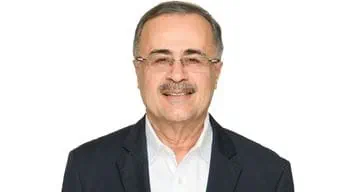CERAWeek
VIDEO: Amin Nasser highlights need for lower-carbon energy with minimal disruption to daily life
The video is blocked
Global March 20, 2024
Aramco president and CEO calls for a new, multi-source, multi-speed, and multi-dimensional road to a realistic energy transition.
Consumers around the world are sending powerful messages that can no longer be ignored.
They want energy that helps protect the planet and their pocket books, with minimal disruption to supplies and their daily lives.
Slogans are not solutions, demonization is not dialogue, and posturing is not delivering the progress we need on our shared climate ambitions.
In the real world, the current transition strategy is visibly failing on most fronts as it collides with five hard realities.
The first is that alternatives have been unable to displace hydrocarbons at scale.
Today, wind and solar combined supply under 4% of the world's energy.
Meanwhile, the total penetration of EVs is less than 3%.
Three to four percent is not nothing, and we welcome the progress in both renewables and EVs.
But three to four percent is not everything either.
Peak oil and gas is unlikely for some time to come, let alone 2030.
It seems no one is betting the farm on that.
The second hard reality is that despite the contribution of alternatives to reducing GHG emissions, when the world does focus on reducing emissions from hydrocarbons, it achieves much better results.
The third reality is that many alternatives in play are simply unaffordable for the majority of people around the world.
The fourth reality is that the energy transition narrative will increasingly be written by the Global South.
As prosperity inevitably rises in the Global South, so will demand for energy, and these nations cannot afford expensive energy solutions.
In turn, this is driving the fifth hard reality, that a transition strategy reset is urgently needed, and my proposal is this: We should abandon the fantasy of phasing out oil and gas, and instead, invest in them adequately, reflecting realistic demand assumptions.
Alongside the energy transition, consider the huge upside potential of a materials transition for our climate ambitions.
Unless we complement conventional materials with more durable and less emission-intensive ones, global net-zero ambitions are unlikely to be achieved.
Many of us have been saying for a long time that the world has been trying to transition in fog, without a compass, on a road to nowhere.
Consumers increasingly agree, as transition realities bite.
They are demanding a transition that is affordable, reliable, and flexible, as well as supporting our climate ambitions.
This welcome clarity from consumers is shifting the transition’s center of gravity to a multi-source, multi-speed, multi-dimensional road to reality, and the right side of history where everyone’s hopes and ambitions can actually be met.



